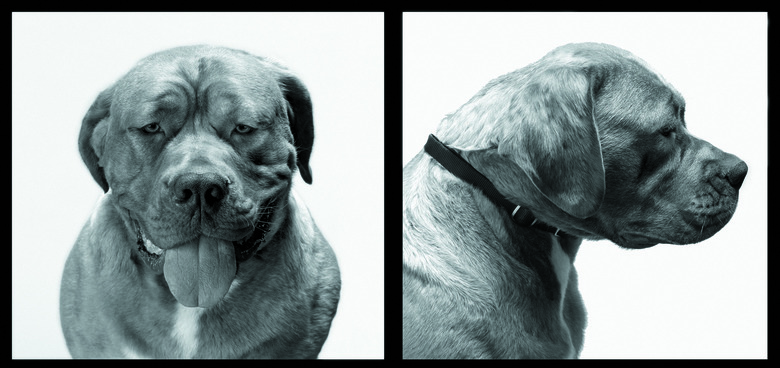The Different Kinds Of Bullmastiffs
The Bullmastiff is a gentle bear of a dog, solidly built and very alert. With males weighing between 100 and 130 pounds and between 24 and 27 inches tall and females slightly smaller, this strong and powerful dog is intimidating but unusually appealing. An original mix of English Mastiff and the English Bulldog, this animal is an excellent watchdog and a lovable companion for all ages.
Skull and Facial Feature Types
Skull and Facial Feature Types
Facial features and skull formation among the different types of Bullmastiffs can vary. Most will exhibit the bulldog "squashed" features with a large square head and short snout while others may have a more elongated head and narrow snout. Both looks are common and acceptable among the breed.
Temperament
Temperament
Bullmastiffs generally have only one type of temperament — gentle and easygoing. They are excellent companions to children and, although intimidating to trespassers and outsiders, will warn households of approaching strangers but will rarely attack. They are extremely loyal and love to snuggle up to their owners for whatever tidbits of attention and affection they can get. Bullmastiffs do not need or like structured play times and obedience classes. The breed thrives in both hot and cold weather and needs relatively little space in which to live and exercise.
Color
Color
The Bullmastiff also comes in various types of color. Shades of red, fawn and brindle colors are commonly seen on the coats of these dogs. Their coats are short and require little to no grooming. Black markings on the face are common but there is usually no white colors on the dogs at all.
Regions
Regions
Types of Bullmastiffs are also classified in the different regions that they originate from. The English, French, Italian and American Bullmastiff are all very similar in appearance, temperament and size. The one breed of Bullmastiff that is very different is the Brazilian Bullmastiff. This new breed of the Bullmastiff, recognized in the 1980s, began as a mix of Pit Bull Terriers and the Tosa Inu, after which they were then bred with Mastiffs and Bullmastiffs around 1990 to create the unique dogs they are today. The features of this canine lack the wrinkles and the square head of the original Bullmastiff and the light undercoatings of the dog were somewhat eliminated through breeding so the dogs could more easily handle sun and heat.
